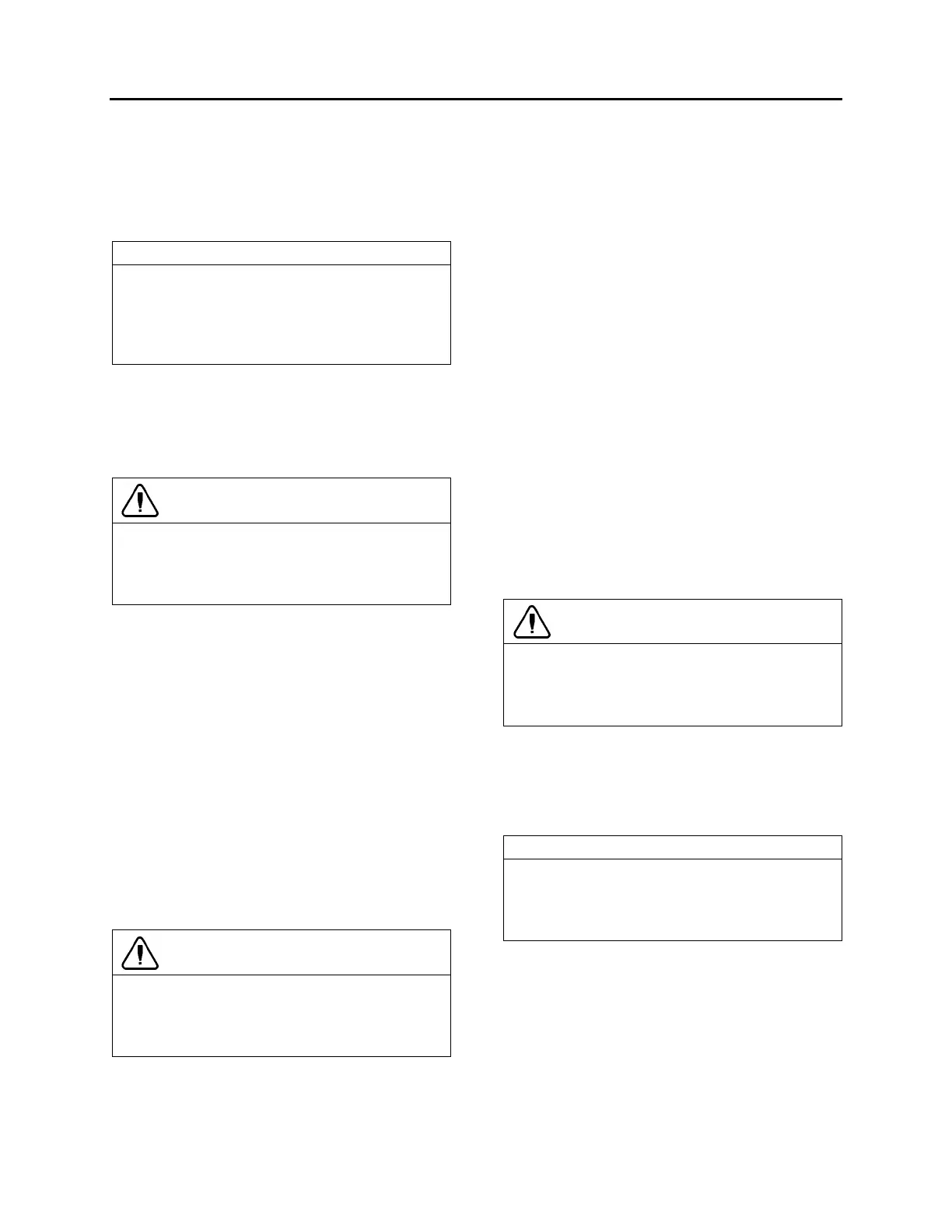Section 13: WHEELS, HUBS & TIRES
PA1553
3
2.2 SINGLE WHEEL REMOVAL
1. Stop engine and apply parking brake.
2. Loosen wheel nuts about one turn (do not
remove the nuts). This is not necessary if
equipped with hydraulic powered gun.
NOTE
For stud-mounted wheels, turn nuts
counterclockwise for R.H. side and clockwise
for the L.H. side of vehicle. For hub-mounted
wheels, turn nuts counterclockwise on both
sides of the vehicle.
3. Raise the vehicle by its jacking points on the
body. See Section 18, "Body", under heading
"Vehicle Jacking Points";
4. Unscrew wheel hex stud nuts and remove
the wheel;
CAUTION
Always mark position of the wheel on the axle
prior to removal in order to replace wheel at
the same location, thus avoiding a new wheel
balancing.
2.3 SINGLE WHEEL INSTALLATION
1. Mount the wheel over studs, being careful not
to damage stud threads;
2. Screw in the hex stud nuts (refer to Figure 2
for sequence) so that wheel will position itself
concentrically with hub. This is important,
otherwise wheel may be eccentric with hub
and will not run straight. In this initial step,
slightly tighten the nuts to correctly position
the wheel;
3. Tighten stud nuts progressively as shown in
Figure 2. The final tightening should be done
with a torque wrench. Tighten stud nuts to
450 - 500 lbf-ft (610 - 680 Nm) for aluminum
wheel.
CAUTION
Insufficient mounting-torque can result in
damage to parts. Excessive mounting torque
can cause studs to break and the wheel to
crack in stud hole area.
3. DUAL WHEELS
3.1 OUTER WHEEL REMOVAL
Same as described in "Single Wheel Removal"
procedure described previously.
3.2 INNER WHEEL
1. Remove outer wheel;
2. Unscrew inner cap nuts
3. Remove inner wheel.
3.3 INNER WHEEL INSTALLATION
1. Mount the wheel over studs, being careful not
to damage stud threads;
2. Screw in the inner cap nuts (Fig. 3), so that
wheel will position itself concentrically with
hub. Refer to Figure 2 for sequence;
3. Tighten inner cap nuts progressively
according to sequence shown in Figure 2.
Final tightening should be done with a torque
wrench. Tighten inner cap nuts to
450 - 500 lbf-ft (610 - 680 Nm) for aluminum
wheel.
CAUTION
Insufficient mounting-torque can result in
damage to parts. Excessive mounting torque
can cause studs to break and the wheel to
crack in stud hole area.
3.4 OUTER WHEEL INSTALLATION
With inner wheel installed, tighten the hex stud
nuts (Fig. 4) using the single wheel installation
procedure described previously.
NOTE
On dual wheel assemblies, position the
wheels with the tire valves 180º apart in order
to have access to both the inner and outer
valves.
3.5 INSPECTION
1. Loosen a hex stud nut three turns (Fig. 4);
2. Tighten the inner cap nut to 450 - 500 lbf-ft
(610 - 680 Nm);
3. Tighten the hex stud nut to 450 - 500 lbf-ft
(610 - 680 Nm).

